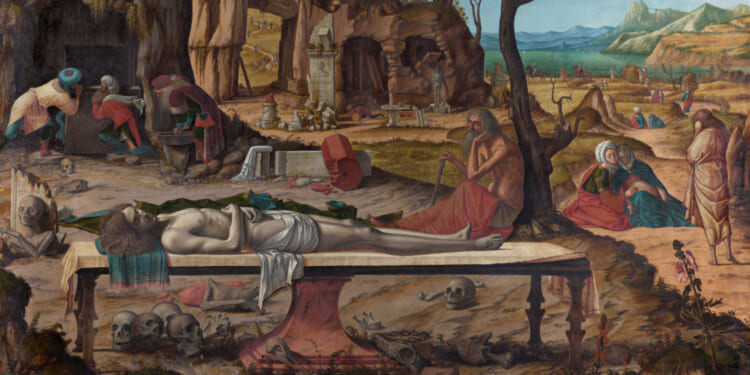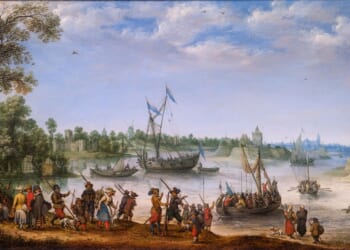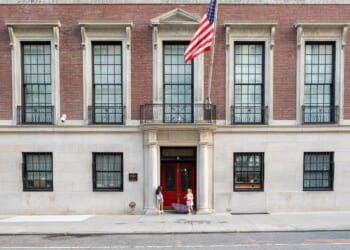Recent stories of note:
“An eerie Renaissance masterpiece, fresh from a four-year restoration process, goes on show in Berlin”
J. S. Marcus, The Art Newspaper
Berlin’s Gemäldegalerie has recently finished cleaning Vittore Carpaccio’s The Preparation of Christ’s Tomb (1515–20), removing centuries-old grime and varnish. The painting, now on display in a small show in Berlin titled “Tribute to Vittore Carpaccio,” has regained all of its vibrant colors and now emerges as one of the supreme achievements of the Venetian Renaissance. Instead of a more traditional lamentation scene, the whole painting is a disturbing memento mori, with skulls, skeletons, and crumbling ruins scattered around a barren landscape. Christ’s emaciated and pallid body lies isolated in the foreground, with only Job for company, who sits against a tree, holding his head in his hand in contemplation.
“Watteau’s theater”
Colin B. Bailey, The New York Review of Books
The inscrutable expression of Pierrot in the monumental painting bearing his name by Jean-Antoine Watteau is fitting for a work about which so much remains unknown. As Colin Bailey notes, Pierrot (1718–19) was not mentioned in a single eighteenth-century account, so key facts that might shed light on the work, such as the patron, original placement, or model, are unknown. That mystery adds to the fascination the work inspires: amid a dreamy sylvan setting typical of the Rococo, Pierrot, dressed completely in white, towers over a donkey and four other comic actors of the commedia dell’arte, of which only one is clearly identifiable as a stock character. The most recent interpretation of the enigmatic painting was put forward by the Louvre curator Guillaume Faroult, who maintains that the smiling man on a donkey is actually an ironic self-portrait of Watteau, a comment on the fractious state of play of French theater. The theory, ingenious though it is, does not fully account for the oddness of the composition and the gentle giant at its center.
“The Rest as History”
J. J. Kimche, First Things
In his review of a recently published history and defense of the Jewish Sabbath, J. J. Kimche argues cogently for the unique blessing that Shabbat represents, especially in today’s age of overstimulation. He writes that “the Sabbatical observer declares his faith in a vision of the cosmos in which humanity is not an isolated speck adrift in indifference, but a covenantal being of irreducible significance, bound from inception to God, community, and creation.” This kind of cosmology and understanding of divine time set the Jews apart from all other ancient civilizations, who saw humans as incommensurate with the inexorable forces of time, fate, and distant gods. In that sense, the Zionist thinker Ahad Ha’am hit the nail on the head when he claimed, “More than the Jews have kept the Sabbath, the Sabbath has kept the Jews.”
















